How to Prep Fish Fillets for Even Cooking
A single knife stroke can solve this tricky problem.
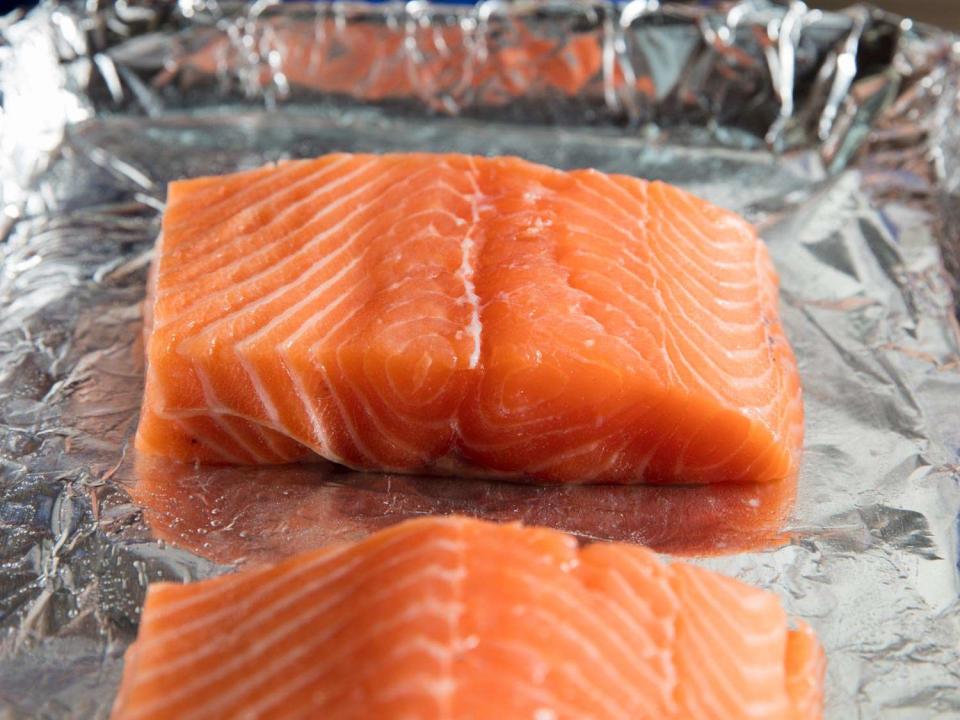
Serious Eats / Vicky Wasik
If you want your food evenly cooked, it usually needs to start out evenly shaped. That's why we try to weigh and size our burger patties uniformly, portion our steaks in consistent sizes, and tie our roasts into nice, tight cylinders.
But nature didn't design itself for our cooking convenience, and some foods don't lend themselves to reliably even sizes and shapes. Just take a look at a fin fish fillet.
This cut of fish tapers in two directions: from the thick head-end down to the skinny tail, and from the meatier dorsal portion down to the thin flap of belly meat. So what can you do to guarantee an even cook?
Easy, just do a little fish origami.
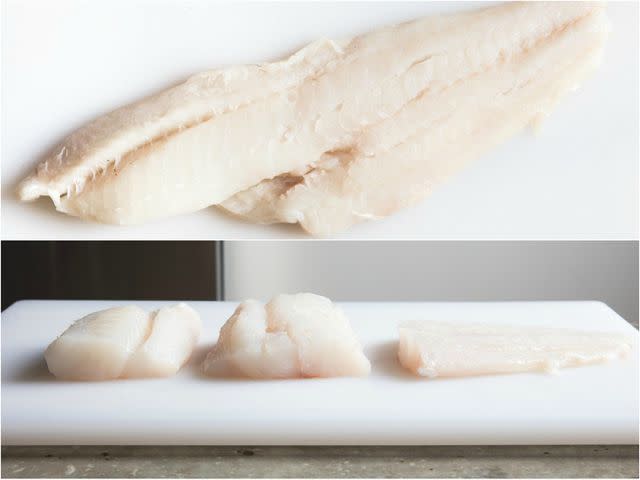
Serious Eats / Vicky Wasik
Let's take a piece of snapper fillet as an example. Now, the one in the photo above isn't in the best of shape, but that's what happens when trades like fishmongering and butchery decline (don't get me started). Let's just ignore that for now.
If we want to divide this fillet into three serving portions of about six ounces each, we're going to end up with very differently shaped pieces (also shown above). First, there's the nice, thick chunk from the head-end at the far left—that's a prime piece. Next, there's the center-cut portion; still a good thickness. But boy, that tail piece on the right is nothing like the others. Serve that to one of your guests and they'll look from their scrawny, very likely overcooked fillet to the plump and hefty ones on their neighbors' plates with a feeling of deep resentment. You don't want your guests to feel cheated, do you?
Plus, the uneven size of these portions makes cooking them together especially difficult. That thin tail piece is going to cook through within a minute or two, then dry out while the other pieces are still just getting started.
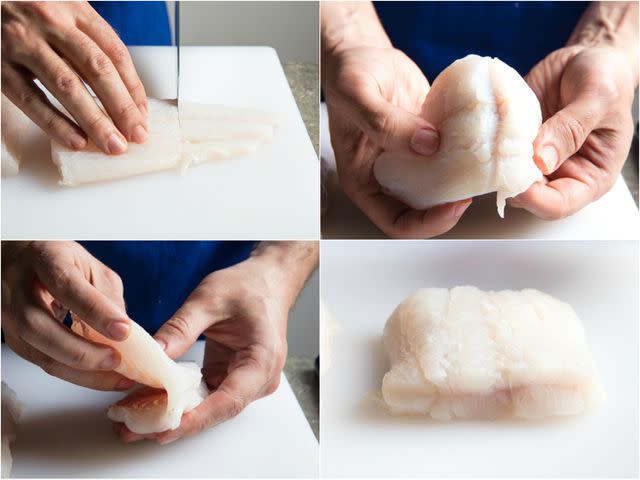
Serious Eats / Vicky Wasik
The origami required here is as follows: Begin by scoring the tail piece crosswise, nearly, but not fully, slicing through. Then fold it under itself. It won't have exactly the same dimensions as the other two, but it'll be a lot closer in size and cook at a much more similar rate, too. Exactly where you make your cut is something you have to eyeball by deciding what portion of the fillet needs to be doubled over itself to create the most even piece of fish throughout. It's rarely right in the middle.
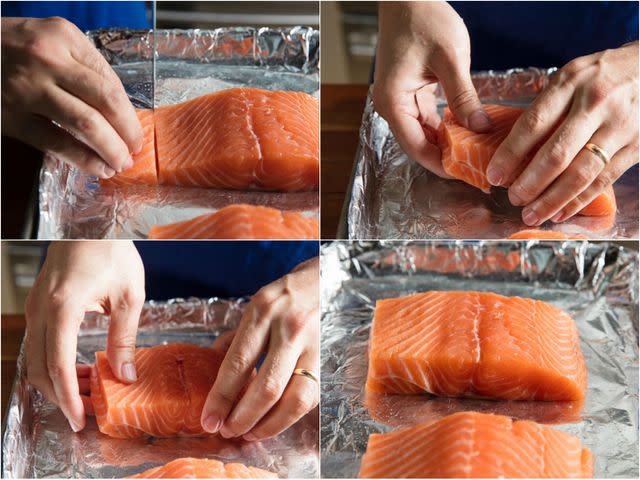
Serious Eats / Vicky Wasik
This is a trick that works for something like salmon, too, where the belly flaps are much thinner than the rest of the fillet. That's not necessarily a huge problem, since the belly is also fattier, meaning it'll remain juicy even once it hits well done. But still, it can look nicer not to have it flopping off to the side of the fillet.
Once again, just score and fold and your problem is solved.
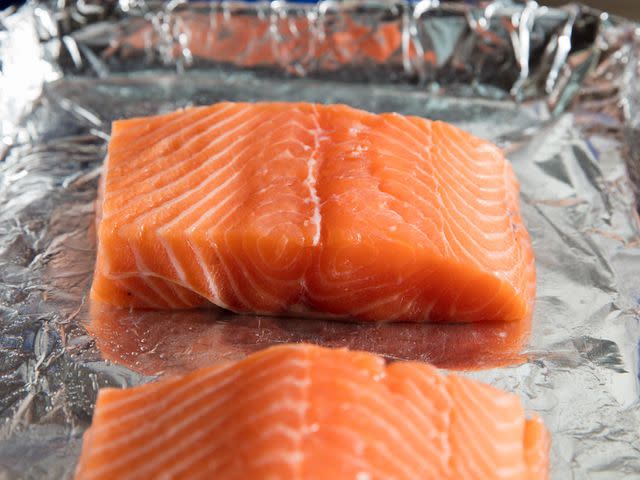
Serious Eats / Vicky Wasik
Note one thing, though: This doesn't work well with skin-on fish, since it would create a steamy little pocket of skin inside the fold. And if there's one thing people want even less than a scraggly piece of overcooked fish, it's a steamy skin pocket. Nature is nature, and skin was never meant to go on the inside of anything.

